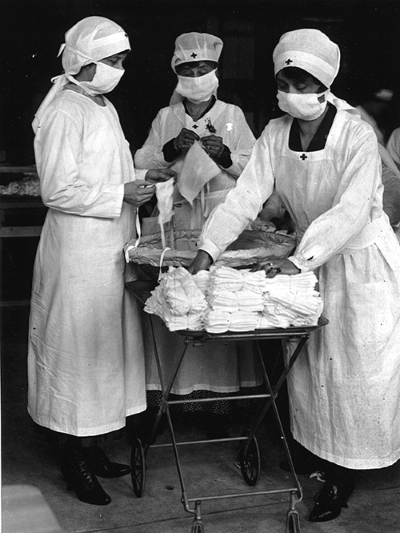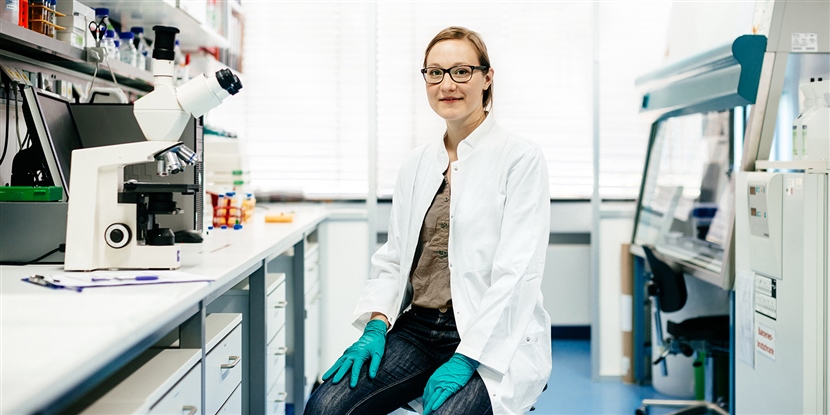Bridgette Byrd O’Connor, BHP Team Member
Louisiana, USA
Well, we’re all probably in some weird limbo land at the moment with the spread of the coronavirus shutting down schools across the nation and the world. And while it can be a pretty scary time for kids (and adults!), there are lots of connections that can be made in Unit 9, which focuses on globalization, to what is happening in our world right now. Another issue we’re all facing is how to teach students remotely, so I’ll attempt to focus on what I think might be the lessons that will work best for engaging them and helping them understand the course narrative (that is, if your students are lucky enough to have access to a device and the Internet).
Kicking this unit off by having students answer the Driving Question (DQ) right out of the gate might be the best approach. I’d bet you a roll of toilet paper that they would make the connections to the spread of disease as a BIG negative impact of the Modern Revolution and the increased interconnection of the world zones. But they might also point to how the entire world is working together to try to solve the problem, trying to learn the lessons from previous pandemics (yay for collective learning!) to come up with a vaccine or antiviral drug and enhance quarantine efforts. In fact, students just might give you the best answers for the DQ at the start of this unit that they’ve ever given for past DQs!
Then, something a bit more fun (and also something that would work well to generate online discussion) would be for them to complete the Appetite for Energy activity. This one should be pretty easy for them if they’ve been stuck at home for a few days. How many times did they stare into the fridge looking for a snack? How many times did they check their phone for new Snapchat messages or a new post on TikTok? In the last 30 days, how many times did they get in a car (probably not a lot) and how might that affect our environment? Climatologists are already commenting on how emissions and pollution have fallen sharply with whole countries under quarantine. Then, ask how different it might have been for someone living in 1920 (or from 1918 to 1919), when many were quarantined for the influenza pandemic)?

Red Cross workers of Boston, Massachusetts making masks, March 1919. © PhotoQuest/Getty Images.
After piquing their interest with some connections to the past and today, have students watch the videos and read the article on the Industrial Revolution in Lesson 9.1. You might choose to post the Key Ideas questions online for students to answer via email. Then, post a few of the Thinking Conceptually questions to a discussion board where students can write a response and ask a question. As more students chime in with their responses and questions, a robust digital discussion could take place about some of themes associated with the Industrial Revolution and connections to our world today. You could even organize an online debate by modifying the Debate: Is Change Accelerating? format so students can virtually participate.

Example of a Thinking Conceptually question about the Industrial Revolution
The assets in Lesson 9.2, including the Crash Course Big History: The Anthropocene and the Near Future video as well as the articles “The Anthropocene” and “Anthropocene Africa” would also make for some interesting discussions. Ask students if they think we are living in the Anthropocene, a time when humans have impacted and dominated the Earth, if we are all stuck at home trying to avoid a virus. The Graphing Population Growth activity could also be used if perhaps you modify it slightly by asking students if they think population will continue to increase at the same rate or if they think they’ll be a leveling off. Students could post their ideas to a discussion board, and again, have others respond and ask at least one question to keep the conversation going.
 Human population growth between 10,000 years ago and today.
Human population growth between 10,000 years ago and today.
Finally, to close out this unit, the article “Collective Learning, Part 4” asks students a powerful question that applies to our current predicament: “Why are there vast differences in the connectedness, power, and wealth among individuals in the modern world?” Your students may (or may not) be aware of other regions and nations that don’t have as much as we in the US do in terms of resources to battle a pandemic or access to the Internet. Why does that problem exist in a world with such wealth, technology, innovations, and so on? The article “Smith, Marx, and Keynes” is a more challenging one for students but connections to our current financial crisis can be made. Ask students what philosophy might be the best in terms of dealing with the ups and downs of the market or overcoming the impact this virus will have on businesses that have to shutter for an unknown amount of time. For example, Keynesian economics, which became a popular economic philosophy during the Great Depression, suggests governments spend the money to get people back to work, even if it means deficit spending. Is the current US federal government doing something similar with the recently passed $2 trillion stimulus bill? Students could research the current bill and make connections to how governments attempted to overcome recessions or depressions in the past.
To wrap it all up, I would ask students to watch the video A Big History of Everything to help them place all of this acceleration into the Big History narrative of increasing complexity and interconnection. As a final assessment, maybe have students complete the This Threshold Today activity, but have them replace the suggested articles with a few that make connections between the Modern Revolution and how COVID-19 is both a cause and consequence of our interconnected, modern world. Newsela has recently provided free access to their resources for everyone during this crisis. Using their articles would make differentiating for different reading levels much easier (and we all need life to be a little bit easier right now). I hope you all stay well, safe, and sane during this unprecedented time in our lives.
About the author: Bridgette Byrd O’Connor holds a DPhil in history from the University of Oxford and has taught Big History, world history, and AP US government and politics for the past 10 years at the high school level. In addition, she has been a freelance writer and editor for the World History Project, the Big History Project, and the Crash Course World History and US History curricula.
Cover image: Portrait of scientist in a laboratory. © Stone / Getty Images.
 For full access to all OER Project resources AND our amazing teacher community,
For full access to all OER Project resources AND our amazing teacher community, 
